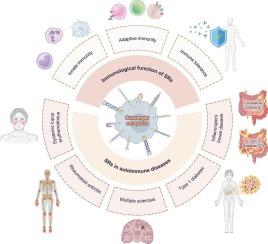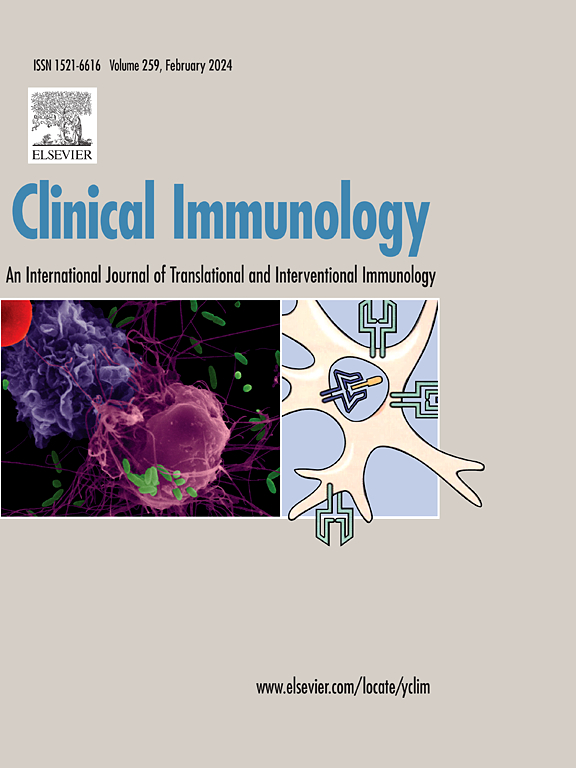Scavenger receptors: An auspicious therapeutic target for autoimmune diseases
IF 3.8
3区 医学
Q2 IMMUNOLOGY
引用次数: 0
Abstract
Scavenger receptors (SRs) belong to a large receptor family expressed on immune and non- immune cells. Initially, SRs are regarded as removers able to recognize and clear modified lipoproteins; However, it is now realized that they are pattern recognition receptors (PRRs) that identify damage-associated molecular pattern (DAMP) and pathogen-associated molecular patterns (PAMPs). The wide range of ligands that bind to SRs demonstrates their diverse functions, including pathogen clearance, lipid transport, cellular differentiation, and signaling pathway activation. Previous studies have revealed the significance of SRs in regulating innate immunity and adaptive immunity. Recently, a large body of evidence further indicates the involvement of SRs in autoimmune diseases, including systemic lupus erythematosus (SLE), rheumatoid arthritis (RA), multiple sclerosis (MS), type 1 diabetes (T1D) and inflammatory bowel disease (IBD). In this comprehensive review, we will summarize molecular structure and immunological functions of different types of SRs, and discuss the recent insights into the involvement of SRs in the development and pathogenesis of autoimmune diseases and their clinical implications and therapeutic potential.

清道夫受体:自身免疫性疾病的理想治疗靶点
清道夫受体(Scavenger receptor, SRs)是一个在免疫细胞和非免疫细胞上表达的受体家族。最初,SRs被认为是一种能够识别和清除修饰脂蛋白的去除剂;然而,现在人们认识到它们是识别损伤相关分子模式(DAMP)和病原体相关分子模式(PAMPs)的模式识别受体(PRRs)。广泛的与SRs结合的配体显示了它们的多种功能,包括病原体清除、脂质转运、细胞分化和信号通路激活。已有研究揭示了SRs在调节先天免疫和适应性免疫中的重要作用。最近,大量证据进一步表明,SRs参与自身免疫性疾病,包括系统性红斑狼疮(SLE)、类风湿性关节炎(RA)、多发性硬化症(MS)、1型糖尿病(T1D)和炎症性肠病(IBD)。在这篇综述中,我们将总结不同类型SRs的分子结构和免疫功能,并讨论SRs参与自身免疫性疾病的发展和发病机制及其临床意义和治疗潜力的最新见解。
本文章由计算机程序翻译,如有差异,请以英文原文为准。
求助全文
约1分钟内获得全文
求助全文
来源期刊

Clinical immunology
医学-免疫学
CiteScore
12.30
自引率
1.20%
发文量
212
审稿时长
34 days
期刊介绍:
Clinical Immunology publishes original research delving into the molecular and cellular foundations of immunological diseases. Additionally, the journal includes reviews covering timely subjects in basic immunology, along with case reports and letters to the editor.
 求助内容:
求助内容: 应助结果提醒方式:
应助结果提醒方式:


